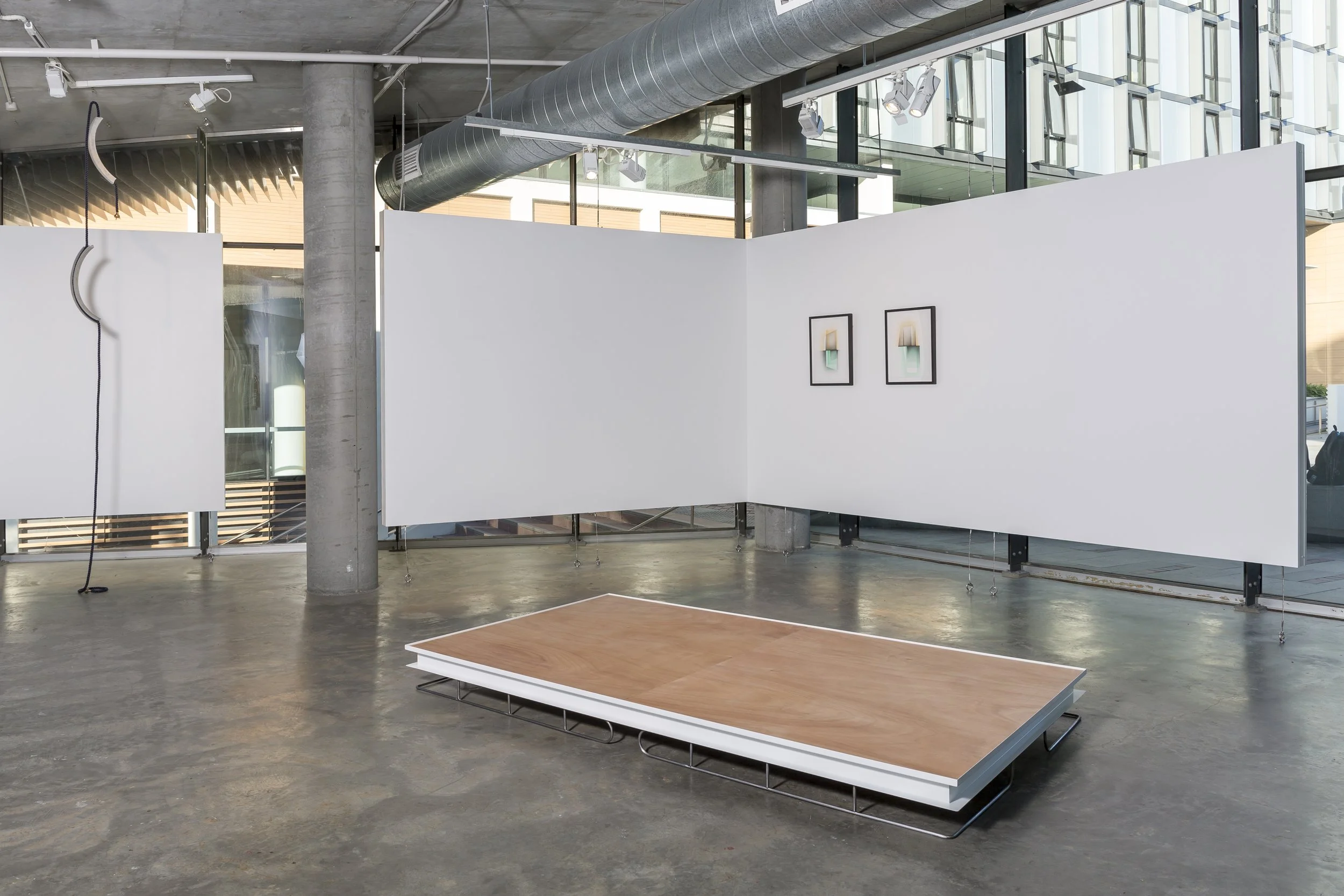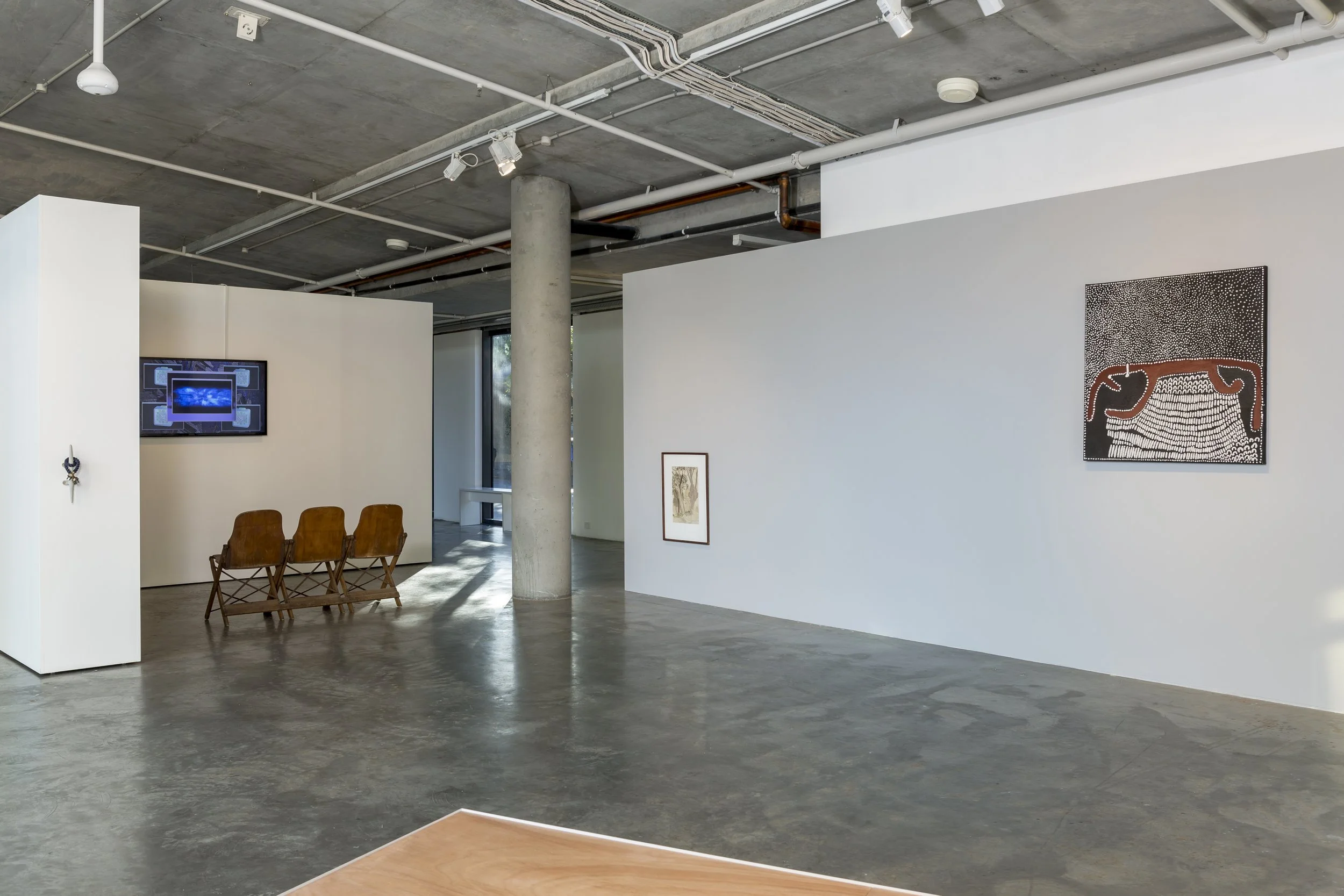BONITA BUB, CONSUELO CAVANIGLIA, AIDEEN DORAN, DEB MANSFIELD & LENA NYADBI
WITH COLLECTION WORKS BY GEORGE DUNCAN, JOHN DRUMMOND MOORE, DAVID STEPHENSON & THE MACLEAY MUSEUM
’COPPICE’
CURATED BY KATRINA LIBERIOU AND SIÂN MCINTYRE
3 MARCH – 2 APRIL, 2016
Maker Unknown, Model of fungi - Elgaricus, c. 1800. Edible, plaster model of fungi, detailed shot. Photography by Document Photography.
ID: There are two models of fungi, one that has two shoots with a brown lid and white stem, the other that has two shoots with a red lid and a white stem. They are both sitting on brown bases on a reflective glass that has a reflection of black and red drawings on them.
CURATORS STATEMENT
Coppicing is an early forestry process that involves the cutting back or removing of part of a tree, shrub or plant in order to stimulate growth. This action of disrupting and interrupting natural growth in order to increase volume of productivity is an English approach to farming and forestry practices, and could be used as a conceptual tool to discuss land, site, history, colonisation, consumerism, memory and trauma as well as growth, fertility and the resilience of nature.
With this exhibition, curators Katrina Liberiou (University Art Gallery) and Siân McIntyre (Verge Gallery) create a landscape where in-between and sometimes contradictory spaces can arise and be explored. Titled Coppice, (understood as the site where the practice of coppicing takes place) this exhibition presents artists who engage with the reconstruction and retelling of history, place, object and practice, stripping back and rebuilding content to create alternate readings.
Coppice, 2016, installation view. Photography by Document Photography.
ID: On the left of the image, there is a black rope suspended from the ceiling, with two arcs attached vertical at the top. In the forefront, there is a large light brown and white wooden rectangle stage. Behind this there is two medium black framed artworks on a white wall, they had blue and orange abstract prints that are symmetrical to each other.
Coppicing is an early forestry process that involves the cutting back or removing of part of a tree, shrub or plant in order to stimulate growth. This new growth could then be used for a range of purposes from industry and agriculture to craft. In the process in-between spaces and habitats are created. A coppice is the site where the practice of coppicing takes place. Using coppicing – or coppice – as a conceptual framework, curators Katrina Liberiou (University Art Gallery) and Siân McIntyre (Verge Gallery) have selected a range of artists who strip back, rebuild, reimagine and reinvent history, memory, place and object.
Coppice presents works from contemporary artists with works selected from the University of Sydney Union’s art collection and early Fungi models from the collection of the Macleay Museum, cultivating a dialogue between new and old.
Coppice, 2016, installation view. Photography by Document Photography.
ID: There is a set of three medium brown wooden chairs in the far left of the image, facing toward a television screen with blue and purple boxes on the screen similar to an old computer desktop. Toward the middle of the image there is a light brown and white print in a dark brown frame on the bottom half of the white wall. To the far right of the image, there is a black, white and brown square dot painting on a white wall.
Bonita Bub reinterprets everyday industrial materials by creating abstracted forms that navigate in and out of prescribed modes of painting, sculpture and architecture. Bub’s work challenges the real and imagined by creating formalist yet playful works that seem familiar as well as abstract.
Consuelo Cavaniglia is an interdisciplinary artist whose work focuses on how we see and understand space. Taking its cues from film, photography and architecture the work employs technically simple visual effects to distort perception and unsettle the relationship between viewer and space. The spaces alluded to in the work are illusory and imaginary – spaces of the psyche rather than the concrete world.
Coppice, 2016, installation view. Photography by Document Photography.
ID: There is a large light brown and white wooden rectangle stage on the forefront of the floor. Behind this there is two medium black framed artworks on a white wall, they have blue and orange abstract prints that are symmetrical to each other. In the far right of the image there are two black and white images that are framed in black lined frames, hung side by side.
Aideen Doran work questions the processes by which historical memory is constructed. She searches out the ambiguous space between critical reflection and nostalgia, presenting documents that despite their obsolescence hint at other, dormant ideologies or ways of being.
Deb Mansfield’s practice looks at liminal geographies and spaces of in-between. Mansfield looks to the peripheral spaces such as islands and travel as a way of investigating the nature of boundaries and borders. In choosing spaces that are neither here nor there, and by conflating truth and fiction, her practice echoes the type of exploratory travel that first inspired it. She makes use of these sites as stop-overs, moments of respite in her navigation across a contemporary cultural landscape.
Through her photography, tapestry, sculptural and installation works, the precarious nature of in-between-ness is explored by re-imagining appropriated narratives and forms. Drawing on stories and materialities that are at once familiar but functionally alienating to Mansfield, she uses her novice-perspective to work her personal experiences into more infamous tales.
Coppice, 2016, installation view. Photography by Document Photography.
ID: In the gallery, there are three white walls and a white plinth with a glass lid in the middle. On the first wall to the left, there are five hand drawn layout plans on white and cream coloured paper, drawn in black and red pen and marker. On the wall in the far back, there are two black and white prints framed in black lined frames, hung next to each other. On the right wall, there is a distorted light wooden frame with a photograph of bark and trees in it, with a reflection of the back wall within the middle of the glass frame. In the middle, on the plinth there is a scene of fungi in a glass case.
Lena Nyadbi is a Gija artist from the East Kimberley in Western Australia. Through her painting Nyadbi depicts two of her principal Dreamings, Dayiwul (the barramundi) and Jimbirla Ngarrangkarni (barramundi Dreaming). Nyadbi positions the work from the stars down, mapping country, evoking memory of place and beautifully narrates in ochre and charcoal the Jimbirla Ngarrangkarni.





